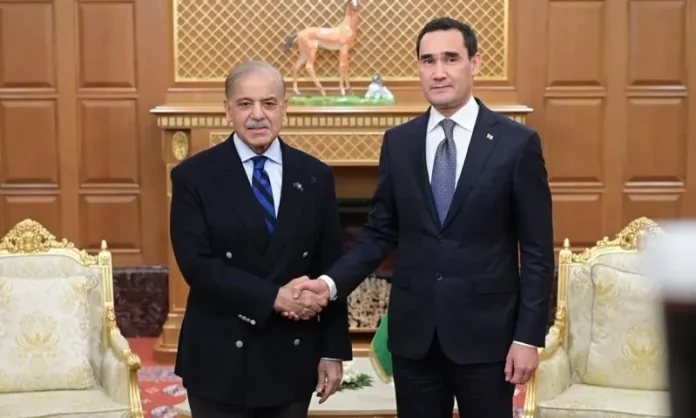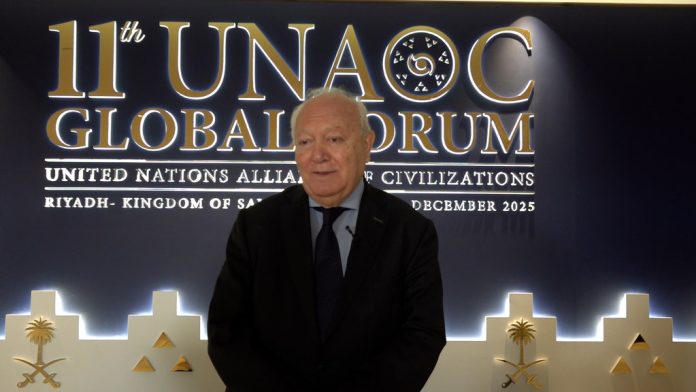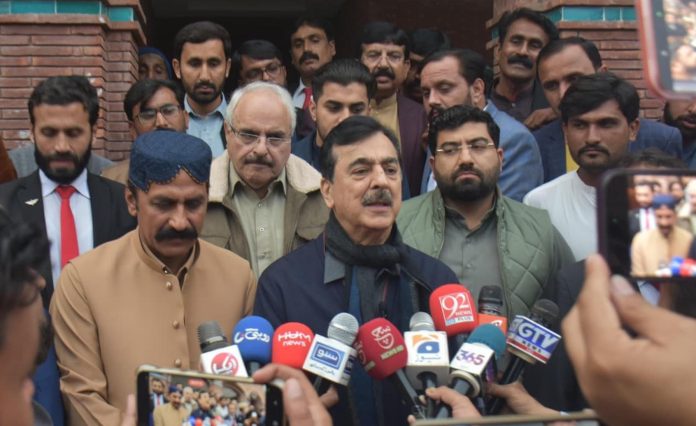Fire erupts in shop
Ayaz congratulates independent group on success in PBC elections
FBR seals godowns in Mardan, seizes non-duty-paid tobacco, Rs 19 billion revenue loss averted
Federal Minister for Information and Broadcasting Attaullah Tarar addressing the book launch ceremony of “Nawaz Sharif, Mard-e-Ahan”, written by senior journalist Nawaz Raza, at the Lahore Press Club.
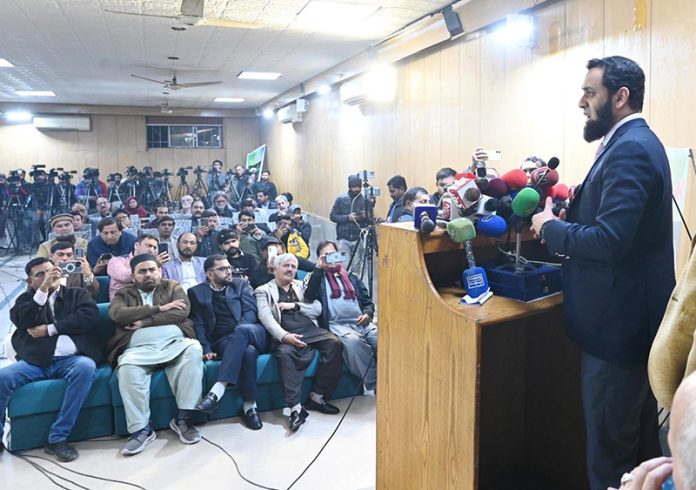
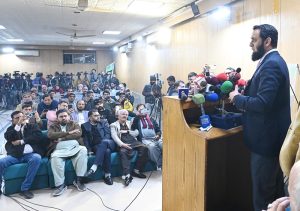
LAHORE: December 13 –
PM Shehbaz’s address at international forum in Ashgabat lays bare pivotal truth: Prof Cheng
BEIJING, Dec 13 (APP): Prime Minister Shehbaz Sharif’s address at the international forum in Ashgabat lays bare a pivotal truth: global stability is indivisible, and peripheral conflicts are not isolated threats but rather red flags signaling systemic vulnerabilities.
His emphasis on peaceful dispute resolution aligns with the stark reality that unrest in regions such as Afghanistan and Gaza sends ripple effects across the globe.
This was stated by Prof. Cheng Xizhong, Senior Research Fellow at the Charhar Institute,a non-governmental Chinese think-tank on diplomacy and international studies based in Beijing.
Pakistan, in its dual capacity as a non-permanent member of the UN Security Council upholding peace and an advocate for decisive action against terrorism emanating from Afghanistan, underscores the inherent link between local conflicts and global security, he said in a statement.
Pakistan’s endorsement of the Gaza Peace Plan and UN Security Council Resolution 2788 epitomizes its dedication to preventive diplomacy—a vital counterweight to the pitfalls of reactive crisis management. Equally crucial is Pakistan’s call to eradicate terrorist safe havens, as unchecked extremism in peripheral areas erodes the trust that forms the bedrock of international cooperation.
Prof Cheng said that PM Shehbaz Sharif’s emphasis on connectivity and sustainable development adds further depth to this overarching vision. Connectivity transforms peripheral regions from flashpoints of tension into pillars of stability. Pakistan’s progress in advancing financial inclusion and climate initiatives exemplifies how development mitigates the root causes of conflict. Yet, his plea for equitable access to technology and climate justice serves as a stark reminder that stability cannot take root in the fertile ground of global inequity.
He said that in an era still plagued by zero-sum mentalities, PM Shehbaz Sharif’s call for collective action strikes a chord.
Peripheral conflicts, terrorism and climate change—intertwined as they are—demand collective solutions. Only by prioritizing peace, inclusive connectivity and equitable development can the international community transform fragility into enduring resilience.
‘Make this the last century of war’, head of UN Alliance of Civilizations tells youth
UNITED NATIONS, Dec 13 (APP): The High Representative for the UN Alliance of Civilizations (UNAOC), Miguel A´ngel Moratinos, has called for young people to make the 21st century the last century in which humanity witnesses war.
In an interview with UN News, an international media website, ahead of the 11th Global Forum of the Alliance, which opens in Riyadh, Saudi Arabia on Sunday, he urged youth everywhere to reclaim peace as a global priority.
The future depends on a new generation willing to choose dialogue over division, and humanity over hatred, he said.
The Alliance is a leading UN platform for intercultural dialogue. As the forum marks 20 years since its creation, Moratinos reflected on how the world has changed over the past two decades.
When the Alliance was established in 2005 as an initiative by former UN Secretary-General Kofi Annan, the international order was unipolar.
Today, it is multipolar, with emerging powers in the Arab world, Asia, Africa and Latin America demanding to be seen and heard.
The Alliance is uniquely positioned to bring them and everyone else to the same table, he added.
Moratinos acknowledged, however, that the world has become more complex. He sees this as a challenge that demands deeper commitment to listening, dialogue and understanding.
Among the most pressing issues Moratinos identified is artificial intelligence – a force he says will shape the future in profound ways, while warning of the challenges.
“A machine has no concern for religion, faith, ethics — but humans do,” he said. That is why he insists that AI must remain human-centered, guided by human values and human decision-making.
He warned against the risk of people surrendering their freedom and responsibility to machines. If humanity forgets its moral compass, he cautioned, technology will not correct course. For Moratinos, the Alliance of Civilizations exists precisely to protect values and ethics.
Turning to one of the Alliance’s important concerns, he spoke about the resurgence of hate speech, especially online.
“Hate is back,” said Moratinos. “Hate makes you feel you have to eliminate your counterpart.”
He warned that hate begins with words but leads to exclusion, violence, and conflict. To combat it, the Alliance is investing in programmes that promote counter-narratives and encourage understanding. And he said young people are central to those efforts.
Today’s youth live “much of their lives” in virtual spaces which he fears can pull them away from real human connection.
“We have to bring realism back to the youth,” he said, urging a better balance between the online world and real life — where relationships, cultures, and communities truly take shape.
Moratinos said the world has become consumed by security and in the process, it has forgotten peace.
“Everybody is much more concerned about security than about peace,” he said. “But you will not get security without peace.”
Saving the planet, he added, is meaningless if humanity continues to destroy itself. He pointed to the heavy human toll of the conflicts in Gaza, Ukraine and Sudan, and insisted that the world must refocus on what truly matters: saving humanity.
“Peace with a capital P,” he said, must be the defining message of the Riyadh forum and the guiding principle for the generations to come.
And he said he believes it is young people who can make that vision real. Only they, he said, can decide that the 21st century will be the last century scarred by war.




